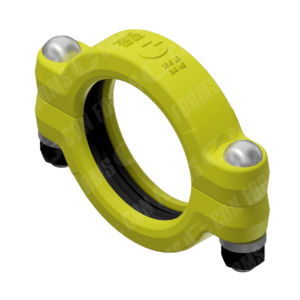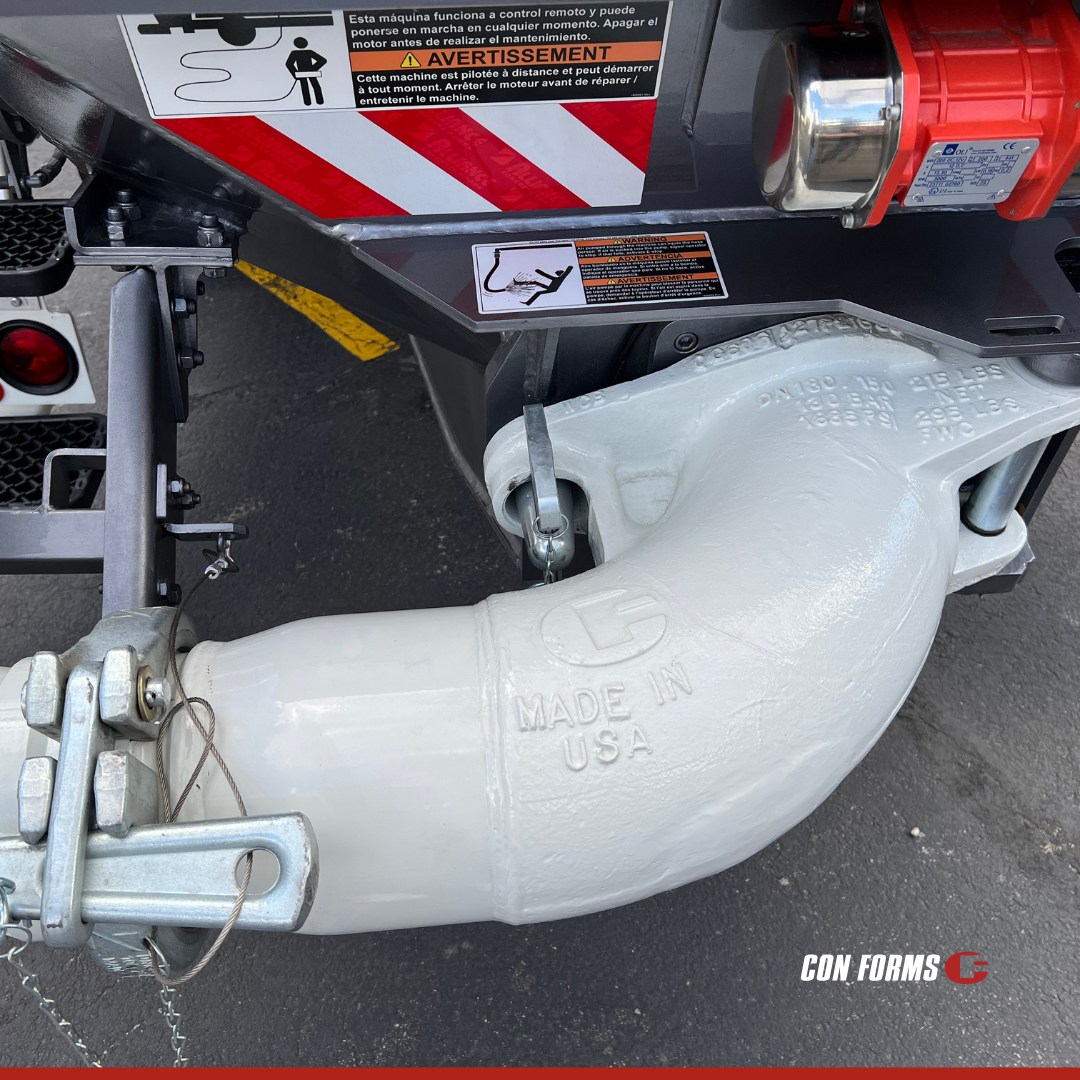How are concrete delivery systems attached to our pumps? Clamps. Clamps are used every day on every concrete pump. However, clamps are often overlooked and can be the weak link in your delivery system. There are many different clamps that have a variety of approved uses and pressure ratings.
Clamps are not all the same. The materials used to make them can affect their performance and strength. The pressure rating is the most accepted method to determine the strength of the clamp, and the higher the pressure rating, the stronger the clamp. Generally, cast metal clamps are not rated as highly as forged steel clamps. Aluminum clamps often have the lowest pressure ratings and are only used in special circumstances. However, it is important to make sure all components connected to your concrete pump equal or exceed the maximum operating pressure of the concrete pump in use.
Snap Clamps
The most common type of clamp in use is the snap clamp. These are easy to use and can be installed quickly. All snap clamps have a hole located on the clamp body and a handle that allows for a safety pin to be inserted, which helps prevent the clamp handle from being disengaged. Snap clamps are divided into two subcategories.
Category 1 is the adjustable snap clamp. These clamps have a male threaded eyebolt on the clamp body and a female threaded end on the clamp handle linkage. The handle can be turned to adjust the amount of effort it takes to open and close the clamp. It is vital that the clamp halves are closed adequately to ensure there is enough engagement on the delivery system ends. If the threaded eyebolt gets debris or concrete on it, it can limit the amount of loosening or tightening the clamp can do. If the clamp is too loose, the end of the delivery system could come out of the clamp and create a serious safety hazard.
Category 2 is the non-adjustable snap clamp. This clamp has a solid link on the handle linkage. The solid link forces the user to fully engage the clamp to ensure there is maximum engagement with the delivery system ends.
Other Types of Clamps
Two-bolt clamps are easy to use but require tools to open and close them. This style of clamp is used in areas where the delivery system may be set up for an extended time, such as a high rise job site. They are also used in areas where there is a possibility a snap clamp handle could be disengaged inadvertently, causing a safety hazard — for instance, for a pipe that is lowered into a caisson with a rebar cage in it.
Wedge-style clamps are often used on concrete boom truck backends. These clamps are designed to be operated by using a hammer to strike a wedge pin, which drives the pin into a slot on the clamp linkage to secure the two halves together. These wedge-style clamps are preferred on the backend of concrete pumps since they are quick to open and close, and work well when they are covered in concrete. The wedge on this clamp also has a hole in it for a safety pin to be inserted. This safety pin is in place to help prevent the wedge pin from becoming disengaged while in use.
End styles on components also affect the system’s pressure rating and effectiveness. The clamps go over the delivery system ends to hold the two components together. The more a clamp covers the ends, the stronger the connection. The 4.8-inch metric pipe used for concrete boom pump trucks has a raised end that is lower than a heavy-duty end. This limits the amount of engagement the clamp can capture once it is closed. For example, 5-inch heavy duty clamps (with a higher raised end) provide better engagement and can be rated as much as three times higher than metric 4.8-inch clamps.
Victaulic or grooved ends are also limited engagement designs. The engagement on these ends is much less than heavy duty components. The reduced engagement material limits these clamps to around 500 to 750 psi. This lower pressure rating does not meet the maximum concrete pump delivery line pressure of most concrete pumps in use, even at a 2:1 safety factor. This is one of the reasons most manufacturers of concrete pumps, and concrete pump safety organizations such as the ACPA, ban this clamp and end design for use in concrete pumping applications.
Male/female ends mate together to create the engagement secured by the clamp. They are common on concrete pump backends, especially boom pump trucks. These clamps are unique to the specific male/female end connection. Alliance and Putzmeister style pumps use a ZX male/female end style on their backend components. Schwing pumps use a Euro male/female end style on their backend components. The ZX and Euro connections are different, and clamps are built specifically for each end style. If there is any doubt about which clamp you need for your pump, please contact your pump supplier for the correct information.
How do we find the pressure rating of a clamp? Clamps have a pressure rating cast into the body of the clamp. Clamps of the same size and end style can have different pressure ratings, so it is important to know your equipment and requirements.
Clamp Inspection
Visual inspection of clamps should be done before and after each use. Closely examine the inside and outside of both clamp halves for cracks and excessive wear at the points the clamp engages the delivery system. Clean any concrete or debris from the clamp halves. If the clamp has safety pin holes on the clamp and handle, they must be clean to allow a safety pin to be inserted. Adjustable snap clamp eyebolts and nuts must be clean, allowing the clamp handle to easily be tightened or loosened. On bolt-together clamps, the bolts and nuts should be clean, free of dirt and concrete, and the threads undamaged. Wedges on wedge-style clamps must not be flattened on the head. If the head of the clamp is mushroomed out, it can cause a hazard, with metal flying off the wedge pin when struck with a hammer.
Clamps should also be inspected when they are installed to make sure they are fully engaged. Snap clamps should be observed on the side where the clamp comes together to minimize any gap, and a safety pin should be installed. On bolt-together clamps, the bolts must be tightened to minimize the gap on any side where a bolt is present and a safety pin inserted, if applicable. Wedge-style clamps need to be hammered down far enough to make sure the gap in the clamp halves is minimized, as well as have a safety pin inserted into the wedge.
If any questions or concerns arise about the proper use of a clamp, or during safety inspections, reach out to your clamp supplier.


Click aquí to view the article in the ACPA Spring Issue.



